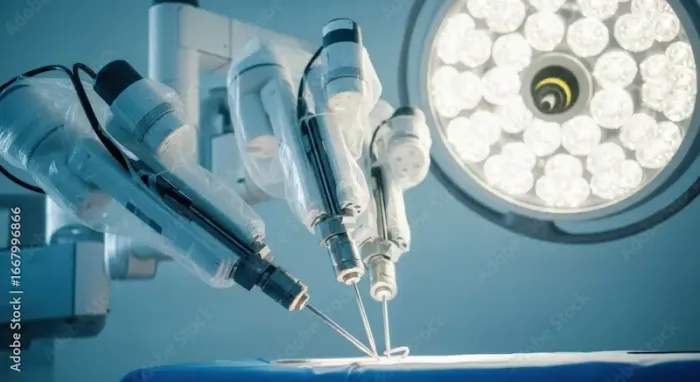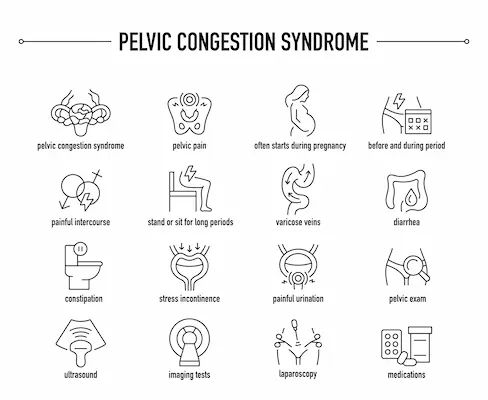The Evolution of Laparoscopic Surgery A Patient's Guide to Minimally Invasive Care
Know about laparoscopic surgery, what it is, advanced techniques in laparoscopy, benefits, it is right for you and the future of laparoscopy.

Written by Dr. Siri Nallapu
Reviewed by Dr. Rohinipriyanka Pondugula MBBS
Last updated on 7th Oct, 2025

Introduction
Imagine needing surgery to remove your gallbladder. Just a few decades ago, this would have meant a long, painful recovery from a large incision across your abdomen. Today, the same procedure is often performed through a few tiny "keyhole" incisions, allowing you to return home the same day and resume normal activities within a week. This guide will walk you through the fascinating evolution of this technique, from its humble beginnings to the high-tech procedures of today. We'll explore how it works, its profound benefits over traditional open surgery, and what you can expect if you or a loved one is considering a laparoscopic procedure.
What is Laparoscopic Surgery? A Simple Explanation
Often called "minimally invasive surgery" or "keyhole surgery," laparoscopic surgery is a modern surgical technique that allows surgeons to operate inside the abdomen and pelvis without making large incisions. Instead of one big cut, the surgeon makes several small incisions (usually 0.5-1.5 cm each). Through these tiny openings, a new world of surgical precision is accessed.
Consult a Top General Practitioner for Personalised Advice
The Core Components: Camera, Instruments, and Insufflation
The procedure relies on three key elements:
1. The Laparoscope: This is a long, thin telescope with a high-resolution camera and a light source at its tip. It is inserted through one incision, transmitting a magnified image of the internal organs onto a large monitor in the operating room. This gives the surgeon an unparalleled, close-up view.
2. Specialised Instruments: Long, slender surgical instruments are passed through the other incisions. The surgeon manipulates these from outside the body while watching the monitor, performing the same tasks as in open surgery but with enhanced precision.
3. Insufflation: To create a working space, the abdomen is gently inflated with carbon dioxide gas. This pushes the abdominal wall away from the organs, giving the surgeon a clear view and room to operate safely.
The Historical Leap: How Laparoscopy Evolved
The journey of laparoscopic surgery wasn't an overnight success. It was a gradual evolution driven by pioneering surgeons and technological innovation.
Early Beginnings: The Cystoscope and Diagnostic Use
The roots of laparoscopy date back to the early 1900s. A Swedish surgeon named Hans Christian Jacobaeus is credited with performing the first laparoscopic operation on a human in 1910. He used a primitive instrument called a cystoscope (originally designed to look inside the bladder) to examine the abdominal cavity. For decades, its use was limited to simple diagnostic procedures, as the technology was too basic for complex operations.
The Seminal Moment: The First Laparoscopic Cholecystectomy
The true revolution began in the 1980s. While gynaecologists had been using laparoscopy for years, it was considered too risky for major abdominal operations. The paradigm shifted in 1985 when German surgeon Erich Mühe performed the first laparoscopic gallbladder removal (cholecystectomy). This groundbreaking event demonstrated that complex surgeries could be done safely through small incisions. Initially met with scepticism from the surgical establishment, the technique's undeniable benefits for patients led to its rapid adoption throughout the 1990s, forever changing the landscape of general surgery.
Why the Shift? Key Benefits of Modern Laparoscopic Procedures
The rapid adoption of laparoscopic surgery wasn't without reason. The advantages for patients are significant and multifaceted, leading to its status as the gold standard for many procedures today.
Benefits for the Patient: Less Pain, Faster Recovery
This is the most compelling reason for the shift. Compared to open surgery, laparoscopic techniques offer:
1. Less Postoperative Pain: Smaller incisions mean less damage to muscles and tissues, resulting in significantly less pain after surgery.
2. Reduced Scarring: The tiny incisions heal into barely noticeable scars, unlike the large scar from an open procedure.
3. Shorter Hospital Stay: Many laparoscopic surgeries are performed as outpatient procedures or require only a one-night hospital stay, compared to several days for open surgery.
4. Quicker Return to Normal Activities: Patients recover much faster, often returning to work and daily life within a week or two.
5. Lower Risk of Infection: Smaller wounds have a lower risk of becoming infected.
Benefits for the Surgeon: Enhanced Vision and Precision
It’s not just patients who benefit. Surgeons gain a superior view of the operative field. The laparoscope provides a magnified, high-definition image on a monitor, allowing for more precise dissection and identification of structures. This enhanced visualisation can lead to better surgical outcomes and reduced risk of complications.
The Technological Vanguard: Advanced Laparoscopic Techniques
The evolution didn't stop with standard laparoscopy. Technology has continued to push the boundaries of what's possible.
Single-Incision Laparoscopic Surgery (SILS)
Also known as "scarless surgery," SILS takes minimally invasive surgery a step further. The surgeon makes a single small incision, usually through the navel, through which all instruments and the camera are passed. This technique aims to eliminate visible scarring, offering an even more cosmetic result.
Robotic-Assisted Laparoscopic Surgery
Systems like the da Vinci Surgical System represent the cutting edge. In robotic-assisted surgery, the surgeon operates from a console, controlling robotic arms that hold the instruments and camera. The system translates the surgeon's hand movements into precise, scaled, and tremor-filtered movements of the instruments inside the body. This provides a 3D high-definition view and allows for extraordinary dexterity in confined spaces, making it ideal for complex procedures like prostatectomies and intricate cancer surgeries.
Common Procedures Transformed by Laparoscopy
Today, a wide array of surgeries is performed laparoscopically. If you are experiencing symptoms that may require one of these procedures, it's important to consult a doctor. You can consult a surgeon online with Apollo24|7 to discuss your symptoms and understand if a laparoscopic approach is suitable for you.
General Surgery: Gallbladder and Hernia Repair
• Cholecystectomy: Removal of the gallbladder due to gallstones is the most common laparoscopic procedure worldwide.
• Hernia Repair: Both inguinal (groin) and ventral (abdominal wall) hernias can be effectively repaired with mesh using laparoscopic techniques, leading to a much less painful recovery.
Gynaecological Surgery: Hysterectomy and Endometriosis
1. Hysterectomy: Removal of the uterus is frequently done laparoscopically, avoiding a large abdominal incision.
2. Treatment for Endometriosis: Laparoscopy is the gold standard for both diagnosing and surgically treating endometriosis, allowing for the precise removal of endometrial tissue.
The Patient's Journey: What to Expect Before, During, and After
Knowing what to expect can alleviate anxiety. Your doctor will provide specific instructions, but the general journey for a laparoscopic procedure is as follows.
Pre-operative Preparation and Tests
You will likely undergo pre-operative tests, which may include blood work, an ECG, and imaging. Apollo24|7 offers convenient home collection for these pre-surgery tests, making preparation easier. You'll be instructed on fasting and may need to adjust certain medications.
The Day of Surgery: Anaesthesia and the Procedure
The surgery is performed under general anaesthesia, meaning you will be asleep. The surgeon will make the small incisions, insufflate the abdomen, and perform the procedure using the camera and instruments. The duration depends on the complexity of the surgery.
Post-operative Recovery and Care Tips
After surgery, you'll be monitored as you wake up. You may have some shoulder tip pain from the gas, which resolves quickly. You'll be encouraged to walk soon after to aid recovery. Discharge instructions will include wound care, activity restrictions, and signs of potential complications to watch for.
Is Laparoscopic Surgery Right for You? Understanding Candidacy
While laparoscopy is preferred for many, it's not suitable for everyone. Factors that might make open surgery a better option include:
1. Extensive scar tissue from previous surgeries (adhesions).
2. Certain complex medical conditions.
3. Severe obesity (in some cases).
4. Conditions like widespread cancer require a larger field of view.
5. The decision is always made by your surgical team based on your individual health profile.
The Future is Here: What's Next for Minimally Invasive Surgery?
The evolution continues. The future points toward even less invasion. Natural Orifice Transluminal Endoscopic Surgery (NOTES) is an experimental technique where instruments are passed through natural openings like the mouth or vagina to access the abdominal cavity, potentially eliminating external scars. Furthermore, augmented reality (AR) is being integrated into surgical systems, overlaying critical patient data and anatomical guides onto the surgeon's view in real-time.
Conclusion
The evolution of laparoscopic surgery is a testament to medical innovation to improve patient lives. It has transformed major surgical operations from daunting, life-disrupting events into manageable procedures with rapid recovery times. From its diagnostic origins to the robotic-assisted systems of today, the core goal has remained the same: to achieve the best possible outcome with the least amount of trauma to the patient. As technology continues to advance, the future of surgery promises to be even more precise, personalised, and minimally invasive. If you are facing a potential surgery, having an informed discussion with your doctor about laparoscopic options is a crucial first step. If your condition requires surgical evaluation, you can book a physical visit to a specialist surgeon with Apollo24|7 to explore the best path forward for your health.
Consult a Top General Practitioner for Personalised Advice
Consult a Top General Practitioner for Personalised Advice

Dr. Suvadeep Sen
Critical Care Specialist
12 Years • MBBS, MD, FNB (CRITICAL CARE MEDICINE), EDIC
Mumbai
Apollo Hospitals CBD Belapur, Mumbai
Dr. Naziya Rahim Bhatia
General Surgeon
7 Years • MBBS ,MS
Bengaluru
Apollo Clinic, Sarjapur Road, Bengaluru

Dr. Sougata Kumar
General Practitioner
8 Years • MBBS
East Midnapore
VIVEKANANDA SEBA SADAN, East Midnapore

Dr. Rupam Chowdhury
Orthopaedician
10 Years • MBBS, DNB (Ortho.)
Kolkata
MCR SUPER SPECIALITY POLY CLINIC & PATHOLOGY, Kolkata

Dr. Debdatta Pati
Psychiatrist
18 Years • MBBS, DPM, MD (PSYCHIATRY)
Kolkata
MCR SUPER SPECIALITY POLY CLINIC & PATHOLOGY, Kolkata
Consult a Top General Practitioner for Personalised Advice

Dr. Suvadeep Sen
Critical Care Specialist
12 Years • MBBS, MD, FNB (CRITICAL CARE MEDICINE), EDIC
Mumbai
Apollo Hospitals CBD Belapur, Mumbai
Dr. Naziya Rahim Bhatia
General Surgeon
7 Years • MBBS ,MS
Bengaluru
Apollo Clinic, Sarjapur Road, Bengaluru

Dr. Sougata Kumar
General Practitioner
8 Years • MBBS
East Midnapore
VIVEKANANDA SEBA SADAN, East Midnapore

Dr. Rupam Chowdhury
Orthopaedician
10 Years • MBBS, DNB (Ortho.)
Kolkata
MCR SUPER SPECIALITY POLY CLINIC & PATHOLOGY, Kolkata

Dr. Debdatta Pati
Psychiatrist
18 Years • MBBS, DPM, MD (PSYCHIATRY)
Kolkata
MCR SUPER SPECIALITY POLY CLINIC & PATHOLOGY, Kolkata
More articles from General Medical Consultation
Frequently Asked Questions
1. How long does it take to recover from laparoscopic surgery?
Recovery varies by procedure, but many patients can return to light activities within a week and resume all normal activities within 2-4 weeks. This is significantly faster than the 6-8 week recovery often needed for open surgery.
2. Are the results of laparoscopic surgery as effective as open surgery?
For the procedures it is designed for, laparoscopic surgery is equally effective, and often superior, due to reduced complication rates like infection and hernias. Studies on laparoscopic cholecystectomy, for example, show it is the gold standard because of its efficacy and patient benefits.
3. What are the risks of laparoscopic procedures?
While generally safe, risks include bleeding, infection, and injury to internal organs. There is also a small risk associated with the insufflation gas, and a very low chance that the surgeon may need to convert to an open procedure during the operation for safety reasons.
4. Will I have scars after laparoscopic surgery?
You will have scars, but they are very small (typically less than half an inch) and fade over time. With techniques like SILS, the single scar is often hidden within the navel.
5. Is robotic surgery better than standard laparoscopic surgery?
Robotic surgery offers advantages in complex cases requiring intricate dissection and suturing, such as prostate cancer surgery or rectal surgery. It provides enhanced 3D vision and greater instrument dexterity. For many standard procedures, however, conventional laparoscopy performed by an experienced surgeon is highly effective and may be more cost-efficient.

 Juice Ayurvedic Uses and Health Benefits.webp)


